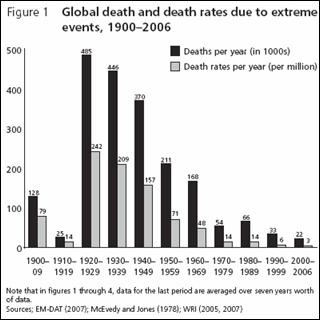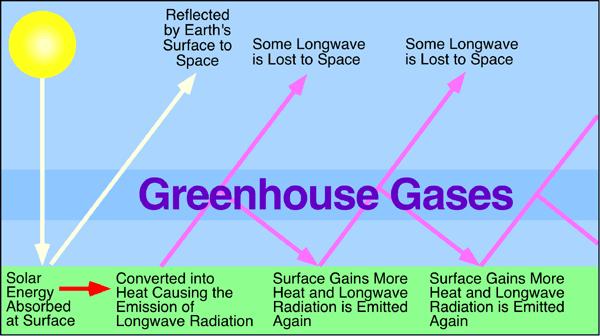The ability to protect the world and ensure an environment that supports effective human and ecological health for growth and development has been considered as a very critical component for sustainability. According to Betts et al (2001), the effects of global warming on health are indeed evident. This paper takes a critical look at the effects of global warming on health with regards to vector-borne diseases and also illustrates the process that has resulted into the current precarious position.
A brief background of the major problem
Over the last few decades, the challenge posed by global warming and its effects on human health has been cited as one of the most dangerous disasters globally. This has been the case due to the activities like burning of fossil fuels carried out by humans and industries. The burning of fossil fuels warms the earth thereby disrupting the delicate balance of life, weather events and climate. The consequence of burning ultimately threatens the health and survival of human beings and other animals.
The vector-borne disease- Malaria
Bonan (2008) indicates that a vector-borne disease is an illness that is transmitted by a pathogenic microorganism via an agent such as an arthropod from one infected individual to another. Specifically for this case, malaria is a vector-bone disease caused by Plasmodium. Studies point out that Plasmodium falciparum causes severe malaria while others such as Plasmodium malarie, Plasmodium vivax and Plasmodium ovale only cause less fatal and mild malaria.
The pathway or chain of the disease and its effects
Malaria is a disease whose transmission vector is the definitive host called the female anopheles mosquito (Godse & Zawar, 2012). Smith, Throop and Lewkowicz (2012) indicate that this disease is mostly prevalent in tropical regions, a factor that is attributed by high humidity, consistent high temperatures and significant rainfall.

Today, global warming has made the aforesaid weather patterns more prominent thereby providing the environment for breeding of mosquito larva. Recent reports from the World Health Organization indicate that there are over 220 million malaria cases with children below the age of five greatly affected (Epstein, 2005). Besides, of the 350-500 million annual malaria cases, between one to three million people die (McMichael & Woodruff, 2002). The number of deaths due to malaria in tropical regions is also high. This vector-borne disease has been known to spread from one infected person to another especially where individuals are not using treated mosquito nets, mosquito repellants or even medication in form of prophylaxis.
Factors contributing to global warming
Greenhouse gases
One of the main causes of global warming is the emission of green house gases from industries and human activities. Initially, global warming was not thought to be a problem largely caused by greenhouse gases until the United Nations Conference on Climate Change (UNFCC- a making of Agenda 21) provided a holistic framework to ascertain the role of greenhouse gases in global warming. A greenhouse gas such as Carbon Dioxide is considered as the most destructive emission that forms a thick covering in the atmosphere while others such as Oxides of Nitrogen, Oxides of Sulfur, Ozone and Methane form a covering layer at the upper end of the lowest atmospheric layer (troposphere).

Consequently, as illustrate in the above diagram (figure I), greenhouse gases form a layer that is highly selective because it allows the short wavelength radiation from the sun pass to pass into the earth’s lower atmosphere causing terrestrial energy transfer. Besides, the greenhouse gases layer prevent the excess radiation in the form of long wavelength radiation from getting back into the outer space and result into the green house effect (Muriuki et al., 2012).
Deforestation, use of fossil fuels and industrialization
Deforestation has been considered as yet another major cause of global warming. Hebbert (2012) explains that the practice of cutting down trees has increased over the years since individuals and businesses have turned into this resource for survival. Deforestation is a critical and very dangerous practice that culminates into the removal of sinking platform for the greenhouse gases (See figure II).

An average of 450 exajoules, a figure considered to be higher when adjusted to reflect small scale users, is got from fossil fuels (McMichael & Woodruff, 2002). The extensive use of fossil fuels largely driven by industrialization forces provides an immense point source for the greenhouse gases (See above diagram).
The factors that contribute to the spread of the disease
Global warming plays a major role in the spreading of malaria, a vector-borne disease (McMichael & Woodruff, 2002). It is imperative to reiterate that global warming causes varying climatic changes dominant in high humidity and temperatures as well as increased rainfall, with the latter causing flooding and pools of stagnant water. Infectious agents and vector organisms thrive, survive, develop and reproduce in the aforementioned climates (McMichael & Woodruff, 2002). The disease risk is high in these climate variables and pathogen development. It is worth noting that mosquitoes thrive in higher temperatures and presents a huge threat to the global population.
From the above analysis, it has come out clearly that global warming is one of the most dangerous aspects that require immediate address to curb the spread of malaria and other vector-borne diseases. Ethical responsibility by humans and businesses in various industries is therefore critical for the risk to be effectively addressed.
References
Betts, R. A. et al. (2001). Biogeophysical effects of land use on climate: Model simulations of radiative forcing and large-scale temperature change. Agriculture for Meteor, 142, 216-233.
Bonan, G. B. (2008). Forests and climate change: Forcings, feedbacks, and the climate benefits of forests. Science, 320 (3), 1444-1449.
Epstein, P. R. (2005). Climate change and human health. N Engl J Med 353:1433-1436.
Godse, K., & Zawar, V. (2012). Malaria presenting as urticaria. Indian Journal of Dermatology, 57(3), 237-238.
Hebbert, M. (2012). Cities and climate change (global report on human settlements 2011)/ climate change and cities (first assessment report of the urban climate change research network). The Town Planning Review, 83(4), 501-504.
McMichael, A.J. & Woodruff, R. E. (2002). Climate change and human health: what do we know? Medical Journal of Australia 177:590-591.
Muriuki, D. et al. (2012). Cross-sectional survey of malaria prevalence in tsunami- affected districts of Aceh Province, Indonesia. International Journal of Emergency Medicine (Online), 5(1), 11.
Smith, S., Throop, J., & Lewkowicz, A. (2012). Recent changes in climate and permafrost temperatures at forested and polar desert sites in northern Canada. Canadian Journal of Earth Sciences, 49(8), 914.